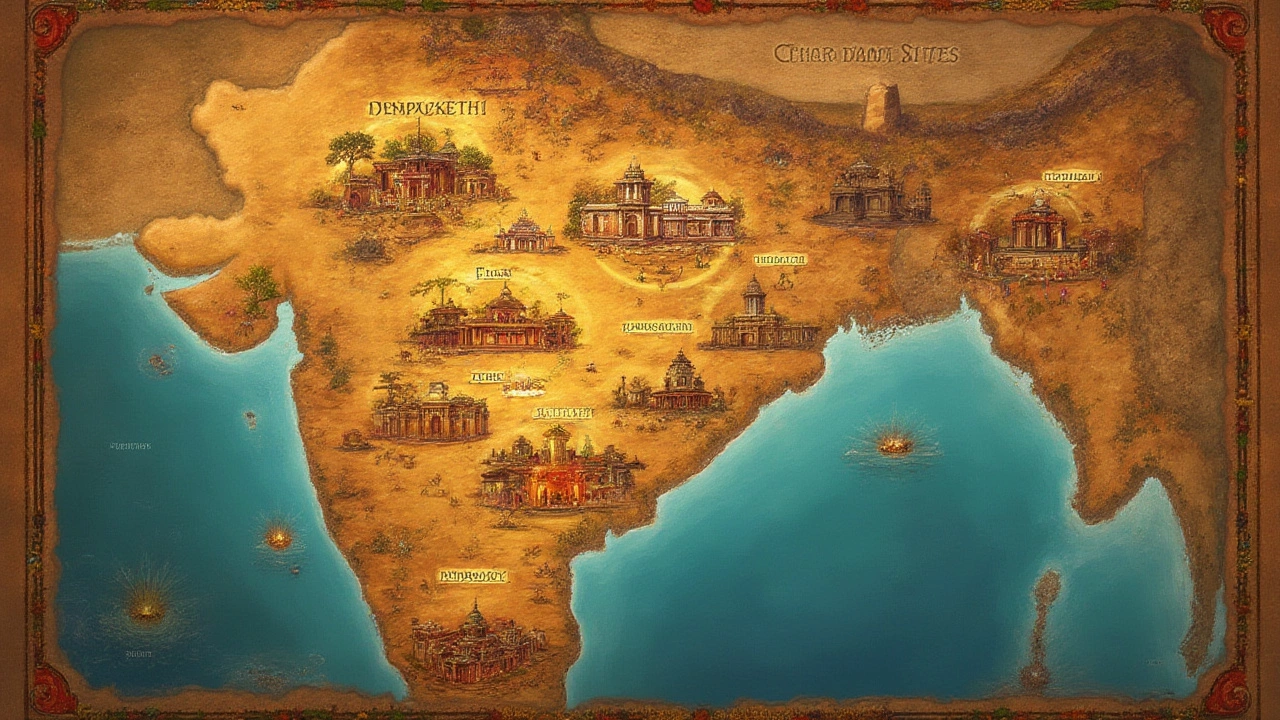
Ever wondered why Kedarnath isn't included in the famous Char Dham? Here's the real story explaining the difference between Char Dham and Chota Char Dham in India.
When planning a Kedarnath pilgrimage, start with a clear picture of what you’re heading for. Kedarnath, a revered town nestled in the Indian Himalayas, home to the ancient Kedarnath Temple dedicated to Lord Shiva. Also known as Kedarnath Temple, it draws millions of devotees each year seeking spiritual solace and breathtaking mountain views.
The town sits in the state of Uttarakhand, the northern Indian region famous for its rugged terrain, dense forests and a string of holy sites. Uttarakhand’s geography makes Kedarnath a natural part of the high‑altitude ecosystem, influencing everything from weather patterns to available transport. Because the region experiences heavy monsoons and harsh winters, timing your visit around the mild months can dramatically improve comfort and safety.
Kedarnath is one of the four peaks of the Char Dham, a traditional Hindu pilgrimage circuit that also includes Badrinath, Yamunotri and Gangotri. The Char Dham status elevates Kedarnath’s religious importance and drives a steady flow of pilgrims, especially during the sacred season of May to October. This connection means that infrastructure, crowd management and local services are often synchronized with the broader Char Dham timetable.
At an altitude of about 3,583 m (11,755 ft), Kedarnath boasts thin air, brisk winds and occasional snowfall. The high elevation is a defining attribute that shapes the visitor experience: trekkers feel the physical challenge, while pilgrims sense a deeper spiritual ascent. The best weather window runs from late May through early October, when temperatures range between 10 °C and 20 °C and paths are clear of ice. Visiting outside this window increases the risk of road closures and limited shelter.
Getting there involves a mix of road travel and trekking. Most pilgrims drive or take a bus to the base town of Gaurikund (2,134 m), then hike a 16 km trail that climbs steeply to Kedarnath. Seasonal helicopter services also operate from Dehradun or Guptkashi, cutting the trek to a short ride—ideal for those with limited mobility or tight schedules. Whichever route you pick, you’ll need a valid permit, a reliable guide (especially for the trek), and a plan for vehicle parking at Gaurikund.
Accommodation ranges from basic dharamshalas and government‑run camps to modest guesthouses and a few private hotels in nearby towns like Guptkashi and Sonprayag. During the peak season, you’ll find bunk‑type rooms that cost as little as INR 150 per night, while more comfortable options can go up to INR 2,500. Booking early is crucial; the surge in pilgrims often fills available rooms within days of the opening of the season. Carrying a sleeping bag and warm clothing is wise, as night temperatures can dip below freezing even in summer.
The spiritual heart of Kedarnath is the temple itself, an 8th‑century structure built by the Pandavas according to legend. Worshippers perform the traditional Shiva‑aarti twice daily, and the site hosts a grand celebration on Maha Shivaratri, drawing crowds from across India. Pilgrims often take a holy dip in the nearby Mandakini River before entering the shrine, believing the water purifies both body and mind. Understanding these rituals helps you respect local customs and enriches your own experience.
Budgeting for the journey is straightforward once you break down the costs. Transport from major cities like Delhi or Dehradun to Gaurikund can range from INR 1,000 to INR 2,500, depending on the mode of travel. Trek permits, guide fees, and helicopter rides add another INR 500‑3,000. Food stays cheap—simple meals cost about INR 100‑200 per plate, though at higher‑end hotels you’ll pay more. By planning ahead, a full Kedarnath trek can comfortably fit within a modest travel budget.
Safety is a top priority in high‑altitude travel. Altitude sickness, sudden weather changes, and steep paths require preparation: acclimatize in Guptkashi for a night, stay hydrated, and carry basic first‑aid supplies. Local authorities maintain rescue teams during the pilgrimage window, but response times can vary in remote sections. Keep an eye on weather alerts, avoid trekking after dark, and inform your guide of any health concerns. These practical steps, combined with the broader safety guidelines for travelers in India, ensure a smoother, worry‑free pilgrimage.
Now that you’ve got the essentials—location, season, routes, lodging, budget and safety—you're ready to dive deeper. Below you’ll find a curated set of articles that unpack each topic in detail, from trekking tips and accommodation reviews to cost breakdowns and cultural insights, helping you turn this overview into a personalized Kedarnath adventure.

Ever wondered why Kedarnath isn't included in the famous Char Dham? Here's the real story explaining the difference between Char Dham and Chota Char Dham in India.